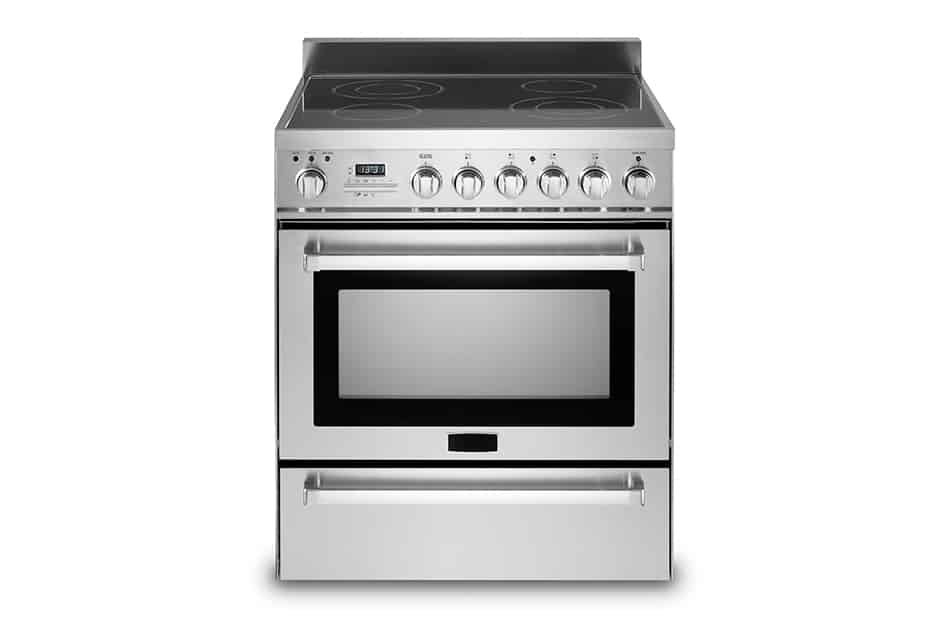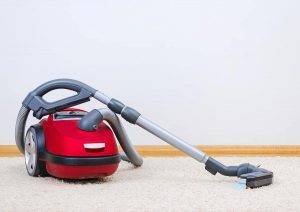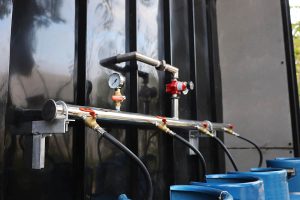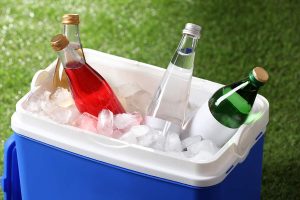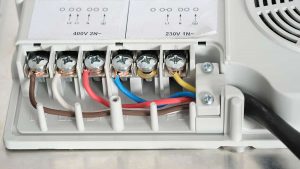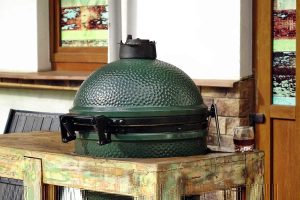The stove is one of the most common pieces of equipment in every kitchen. Most people would prepare hundreds of meals on the kitchen stove without ever needing to learn its fundamental parts. However, not only can knowing the parts of your stove help you use it better, but it can also make repairs faster when the stove breaks down.
From gas stoves to electric, most kitchen stoves have the same fundamental parts.
If you want to get more familiar with your stove, here’s what all the parts illustrated with a custom diagram are called.
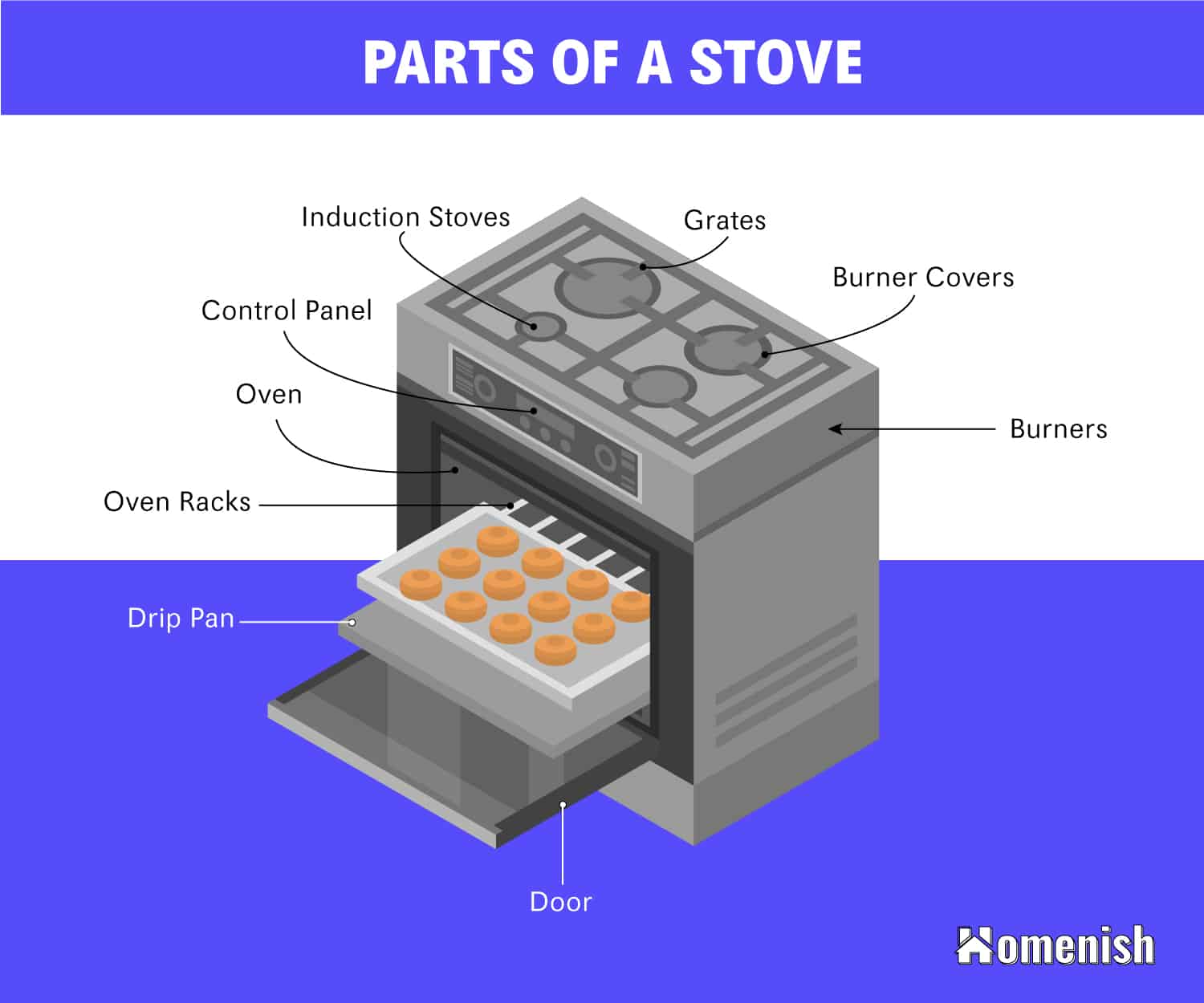
Burners
Most stoves, whether electric or gas, come with four burners, each of different sizes, and offers high, low, or medium heat input. They are the part of a stove that supplies heat to your pot.
The bigger burners in your stove are more suited for your bigger pots while the smaller burners are more suited for smaller cookware. The size of burners often differs by model.
Burner Covers
The kind of fuel used by a stove determines the appearance of its burners. Burners can also appear differently based on the stove type. Gas burners can either come sealed or open. Open burners burn a whole lot faster than even the fastest burning sealed burners.
With sealed burners, the heat is concentrated in the middle of the cooking surface, so food in the center of your pot would cook faster than the food not close to the center of your pot.
Sealed burners, on the other hand, have their heat spread across the base of the pot, instead of just being concentrated in the center, this means that there are fewer instances of food burning with sealed burners than there are with open burners.
Open burners are popularly used in a commercial kitchen, these burners come in various sizes and are more suited for the several sizes of pots and pans found in commercial kitchens. Sealed burners are preferred for residential kitchens because of their eye-catching look and aesthetic appeal.
However, you may find open burners in residential kitchens and sealed burners in commercial kitchens, it all depends on personal preference.
Control Panel
The control panel of a stove enables you to use and adjust the different functions on the stove. The controls on a stove are typically push-buttons and apart from being able to turn the stove off and on, the controls can also be used to change the temperature in the warming drawer or oven. Sometimes the control panel can also have the knobs used to control the burners.
Drawer or Door
Most stoves come with ovens and warming drawers and these parts usually have a drawer or door mechanism that allows you open and close it.
Drip Pan
Drip pans can be found below the burner on stoves with sealed burners. These pans collect any overflows or dribbles on the stove. You can remove them when you need to have them cleaned or replaced.
Grates
Grates are the framework of metal that sits above burners. A stove’s grates help spread heat evenly beneath the pots. Grates on gas burners are made from cast iron.
The grates on electric stoves are made of ceramic glass. Grates can either come as individual grates for each burner or they could be continuous grates.
Continuous grates can carry heavier pots, and they also allow pots to be easily slid from burner to burner. They also disperse heat more slowly.
Oven
Many stoves come fitted with an oven for cooking food. Some ranges can include more than one oven or warming drawer depending on the sizes of the stove.
Oven Racks
Kitchen stoves comprise a few adjustable oven racks. You can easily remove these racks for cleaning or to move them away from higher temperatures when cooking depending on your cooking needs.
Other less frequently mentioned parts of a kitchen stove include gas valves, thermostats, and pilot lights.
Induction Stoves
On induction stoves, cooking is done on a flat glass surface fitted with electromagnetic heating coils. These heaters are power-driven by electromagnetic energy that can only be activated by the iron in your cookware.
When iron cookware touches the active heaters on an induction stove, the iron particles are stirred up and cause your pot to heat up quickly. This is unlike anything you’ll see with a gas stove or an electric where heat is transferred from burners to pots and pans during cooking.
With induction stoves, only the cookware heats up while the glass surface of the stove remains cool and safe to touch. This means that the induction stoves start cooking a lot more quickly than the gas or electric stove because unlike with the latter, you don’t have to wait for induction stoves to heat up first.
A lot of people wonder about the difference between induction stoves and electric stoves. Induction stoves use electricity to heat the pots and pans directly while their surface remains cool to touch even during the process of cooking.
Electric stoves, on the other hand, are also stoves that get their heat from electricity but they are made with coiled metal elements covered with a ceramic surface, the metal elements heat the ceramic surface electronically to the preferred temperature. An electric stove has similar parts to a gas stove but the parts of an induction stove are a little different.
Parts of Induction Stove
Control Panel
Induction stoves come with a digital display that shows their heat settings either on a numerical scale or in degrees as temperature. This control panel is usually controlled as touch screens other occasionally you might find an induction stove with knobs.
Knobs
Knobs are more commonly seen in electric stoves and rarely in induction stoves. They are the exterior buttons that are used to control the burners and the oven. You’ll typically find the knobs on the top of the stove or in front of it.
Inductors
Induction stoves do not have burners; instead, they have electromagnetic heating coils that transfer heat-producing currents to your pots so that your pots and pans become the burners.
Sensors
Induction cookware comes attached with sensors in every inductor to detect the temperature of the pot or pan cooking. These sensors ensure that the supply of current is cut off if the pot or pan overheats.
